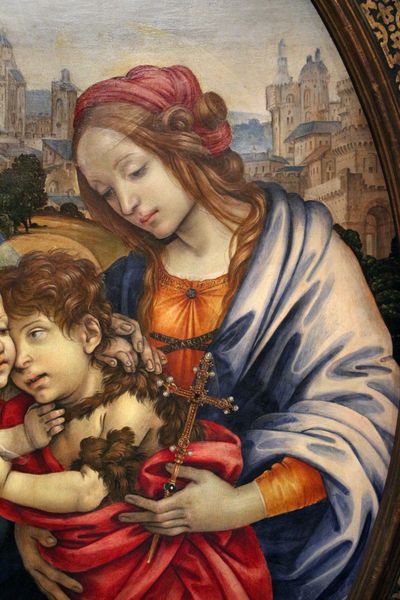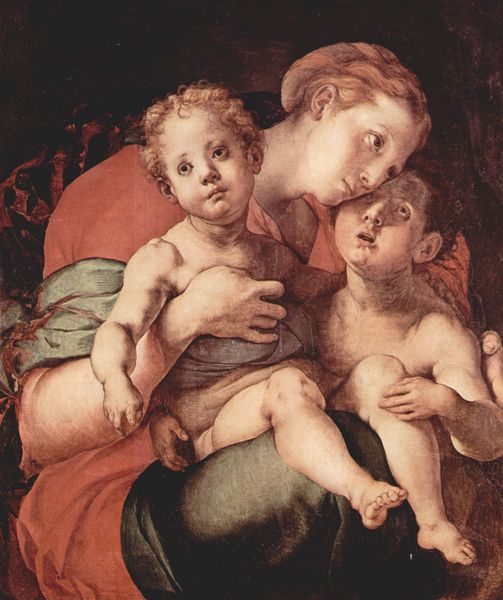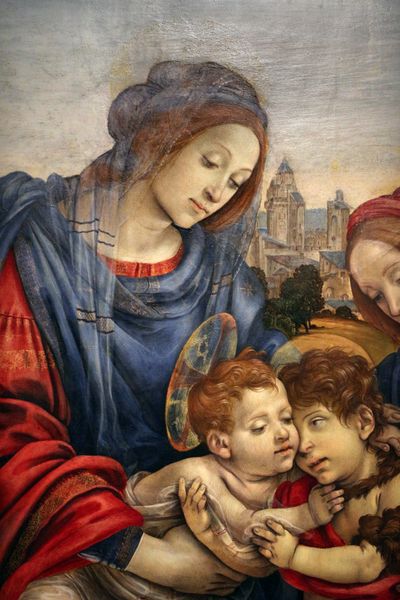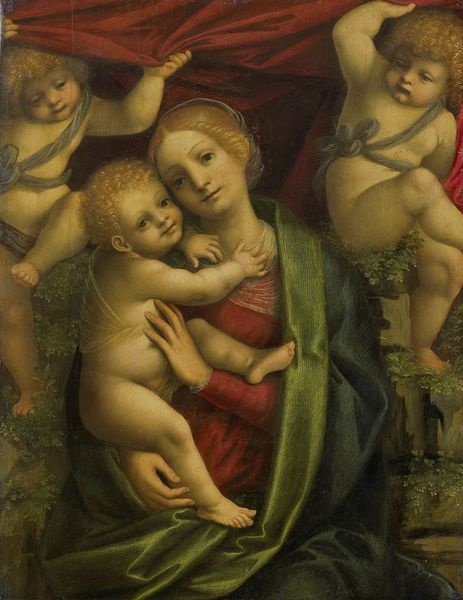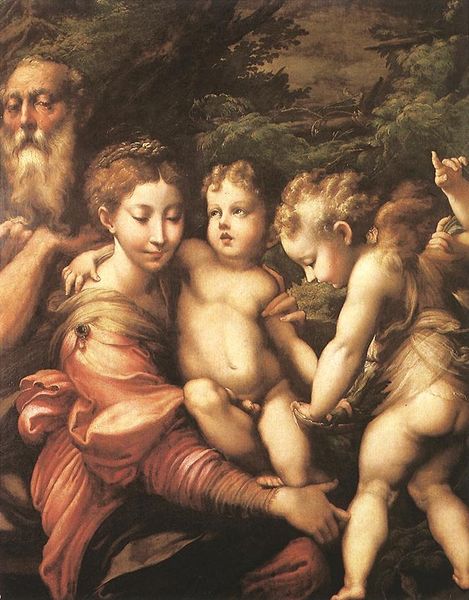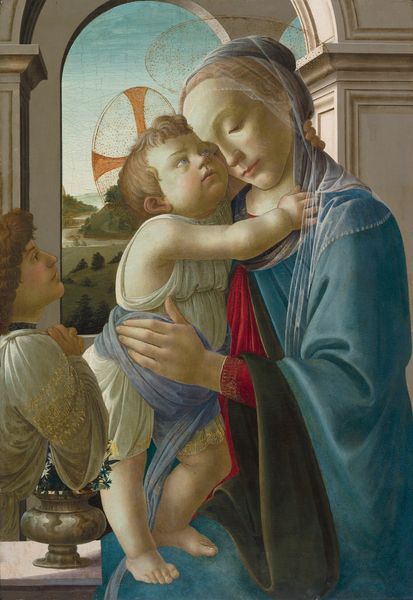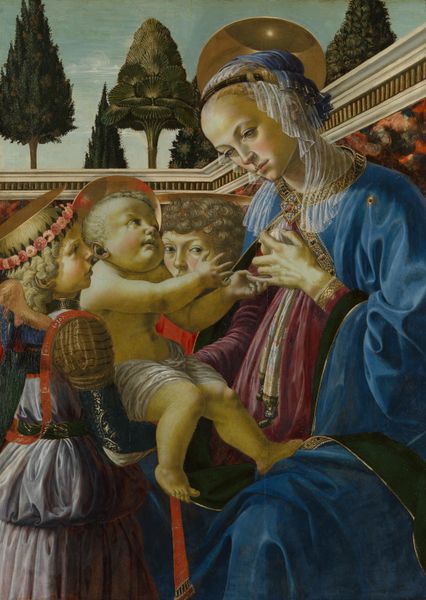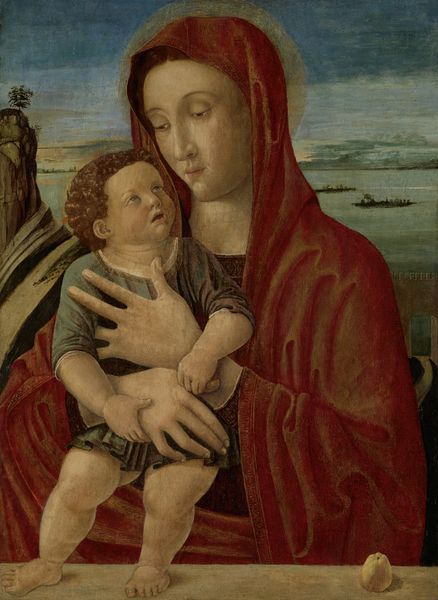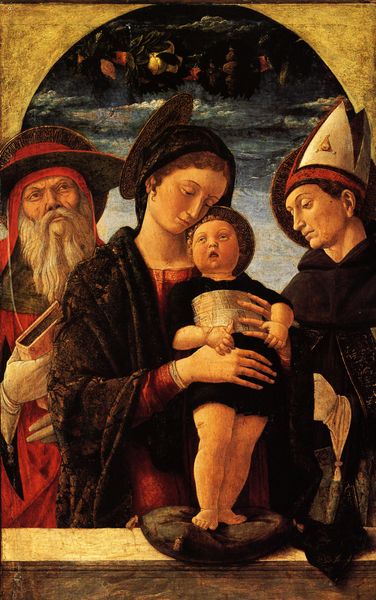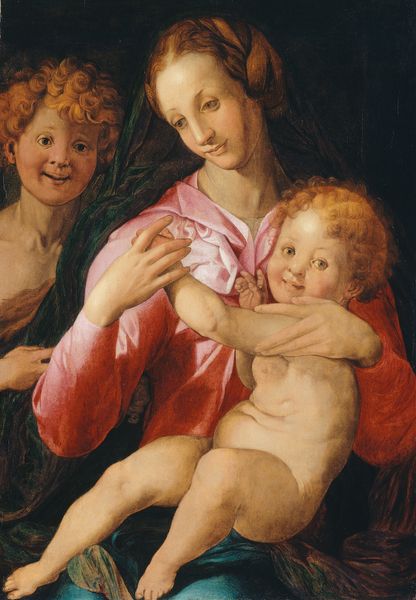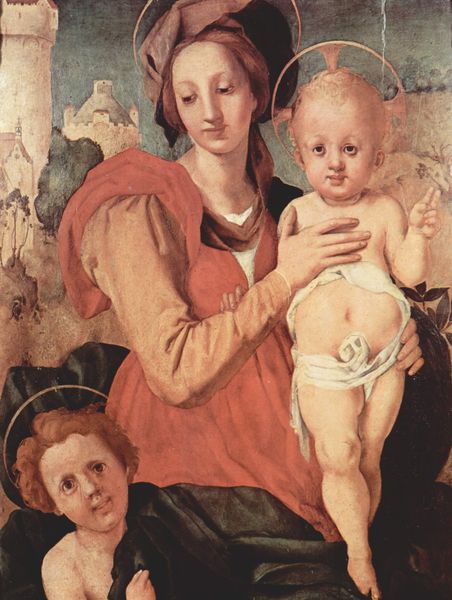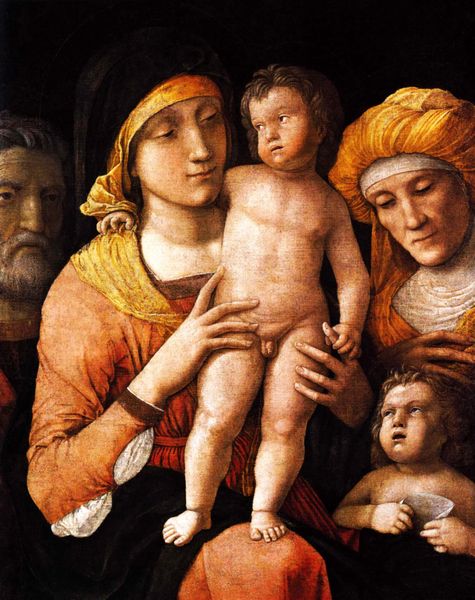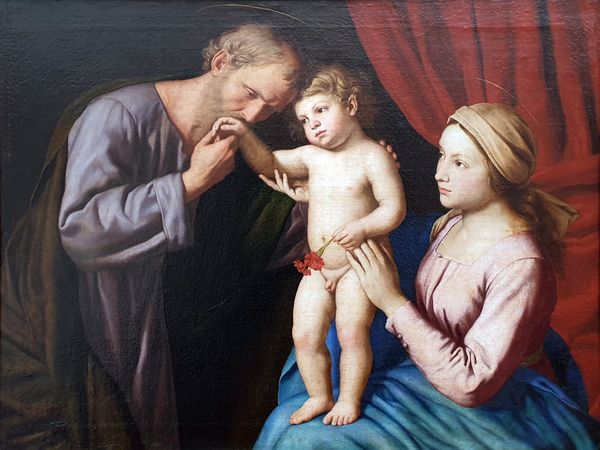
painting, oil-paint
#
portrait
#
painting
#
oil-paint
#
figuration
#
oil painting
#
history-painting
#
italian-renaissance
#
portrait art
Copyright: Public domain
Editor: So, here we have a detail from Filippino Lippi's “Sacra Famiglia coi Ss. Giovanni Battista e Margherita” painted around 1495, using oil paints. What strikes me immediately is how tender the scene feels, despite its somewhat formal composition. What do you see in this piece? Curator: Ah, Filippino, swimming in his father’s wake yet charting his own course. Forget the pious titles for a second and look at that raw humanity—the awkward embrace of those little cherubs! What I love is how he manages to blend this intense emotional depth with the era’s artistic conventions. Doesn’t the gold filigree feel a bit like heavy handed stage dressing against their intimate bond? Do you think he does it on purpose? Editor: It does kind of highlight the tension between the religious narrative and just, you know, children being children. Maybe he’s trying to say something about faith as a human experience, not just a divine decree? Curator: Exactly! It’s a subtle rebellion, a quiet insistence on the emotional truths within these grand stories. I see a reflection on my own struggle between sacred beliefs and personal longings. And the subtle details…see how the landscape feels almost dreamlike, distant? That, to me, echoes the elusive nature of divinity itself. What's your feeling about the expressions on their faces? Editor: They look a little apprehensive. Like they’re not entirely sure about all this adoration. Maybe it's the weight of expectation even as babies. Curator: Precisely! Perhaps Lippi felt that pressure too. It's all food for thought. Editor: This makes me look at Renaissance art differently, seeing the artists’ subtle critiques within these canonical works. Curator: Absolutely. Art history isn’t just dates and attributions, but really stories about humans and their very loud feelings!
Comments
No comments
Be the first to comment and join the conversation on the ultimate creative platform.
